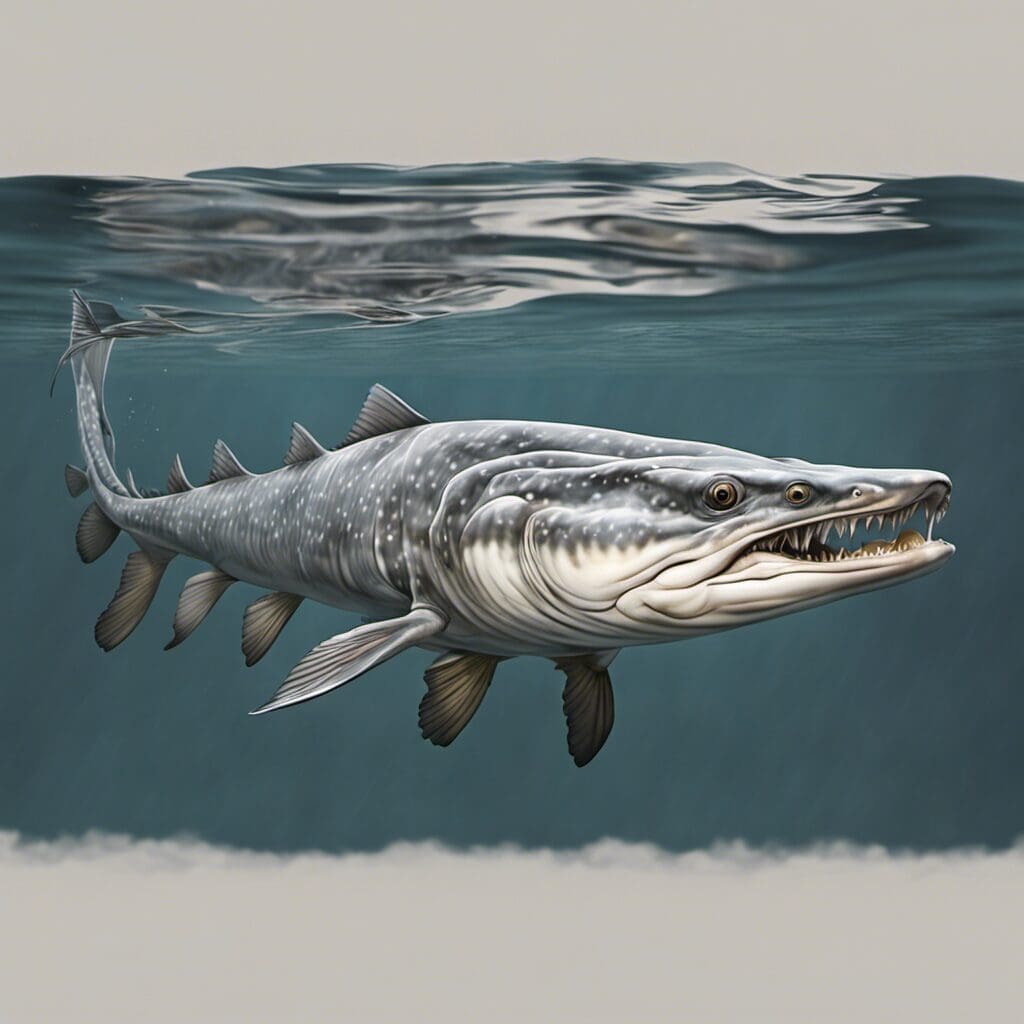Introduction
The White Sturgeon, scientifically known as Acipenser transmontanus, is a member of the Acipenseridae family. This fascinating ancient fish species is one of the largest freshwater fish in North America.
Conservation Status
The White Sturgeon is currently listed as a species of “Least Concern” by the International Union for Conservation of Nature (IUCN). Efforts to conserve this incredible species include controlled fishing regulations and habitat restoration projects.
Statistics
| Statistic | Average | Range |
|---|---|---|
| Length | 4.9 feet | 4.9 – 20 feet |
| Weight | 77 pounds | 77 – 1,799 pounds |
| Average Lifespan | 50 – 60 years |
Distribution
The White Sturgeon predominantly resides in the Fraser and Columbia River systems of the Pacific Northwest. Unlike most sturgeon species, the White Sturgeon does not undertake long-distance migrations.
Habitats
This species thrives in fast-moving freshwater but can also be found in saltwater near the mouths of rivers. They prefer the deep, cold water environment, with temperatures ranging from 2 – 18 degrees Celsius.
When and Where to See
White Sturgeons are generally found towards the bottom of rivers and estuaries from early spring to late autumn. They are most active during the night and are less noticeable during the day.
Best Fishing Locations
Here’s a list of the top locations for fishing White Sturgeons:
- Fraser River, Canada
- Lake Shasta, USA
- Snake River, USA
- Columbia River, USA
- Sacramento River, USA
To find White Sturgeons, look for deep, slow-moving pools of freshwater, especially ones with sandy bottoms.
How to Catch
White Sturgeons prefer raw fish, like herring, as bait. The best fishing techniques are bottom fishing and shore fishing. The best time is during the night, especially during spring and autumn seasons.
Identification Guide
The White Sturgeon is usually grey in color, with a spindle-shaped body and a shark-like tail. It differs from other species by its unique combination of size, lack of scales, and four barbels near its mouth.
Culinary
White Sturgeon is described as having a rich, buttery taste. It is a good source of protein and omega-3 fatty acids. One popular recipe is grilled White Sturgeon with a lemon herb butter.
Additional Information
White Sturgeons are bottom feeders, with a diet primarily consisting of shellfish, small fish, and invertebrates. Their main threats include overfishing and habitat loss. Sturgeons have not only a significant cultural value among indigenous peoples but also a commercial value for their roe, which is used for caviar.
References and Further Reading
U.S. Fish and Wildlife’s White Sturgeon Report, Fisheries and Oceans Canada’s White Sturgeon Profile.

